Ruins of the mysterious kingdom of Guge in Tibet
The prosperous Guge Kingdom was built in the 10th century and disappeared mysteriously in the 17th century, leaving ruins of great cultural and artistic value.
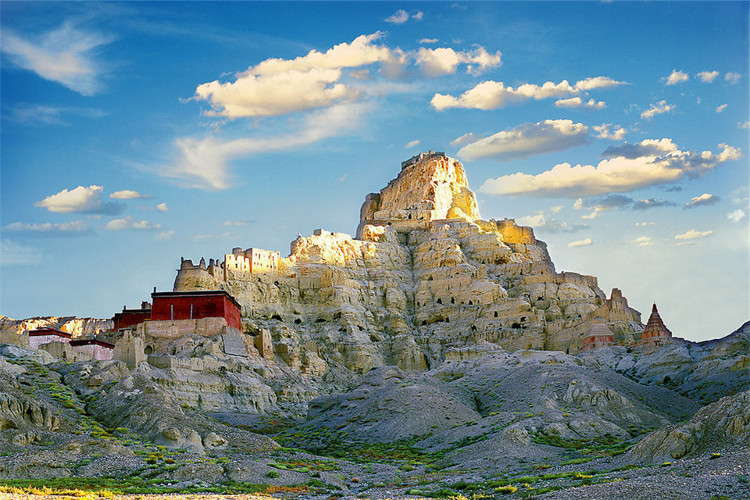
Ruins of the Guge kingdom lie on a mountain in Zhabran village, in China's Tibet Autonomous Region.(Photo: Tibettravel).
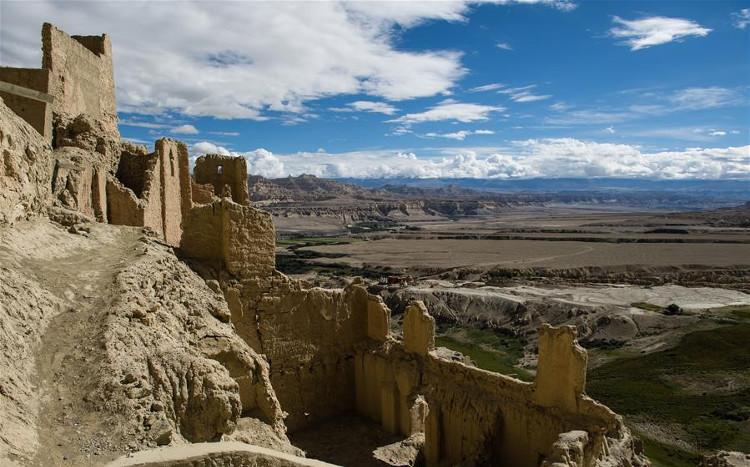
In the 9th century, the kingdom of Tubo disintegrated after Lang Dharma was assassinated.Jide Nyimagon, Lang Dharma's grandson came to Ngari and founded the Kingdom of Guge.The sons of Jide Nyimagon and their descendants later established three modes: Guge, Ladakh and Burang.In the most flourishing period, this regime not only governed Ngari entirely, but also extended to Kashmir and Pakistan today.(Photo: Xinhua News Agency).
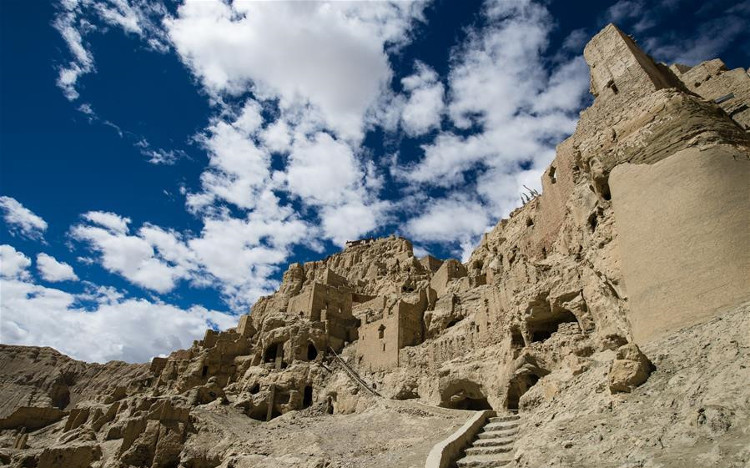
After 700 years of existence, the Kingdom of Guge died in 1635, more than 100,000 people suddenly disappeared without leaving a trace.There are many different theories about this event.In it, the opinion that received the most concurring comments was that in 1635 war broke out, the Ladakh regime occupied and destroyed the Kingdom of Guge.The last king of Guge and family members were arrested and taken away.(Photo: Xinhua News Agency).
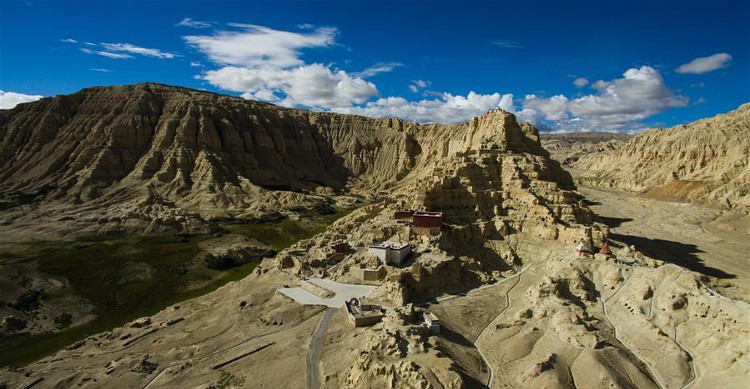
Currently, the remnants of the Guge palace still surprised visitors.Castle-style palace was built along the mountain.Inside the palace, underground tunnels lead to different directions.This relic covers an area of 720,000 square meters, including 445 rooms, 879 caves, 4 secret tunnels and 28 Buddhist temples.(Photo: Xinhua News Agency).
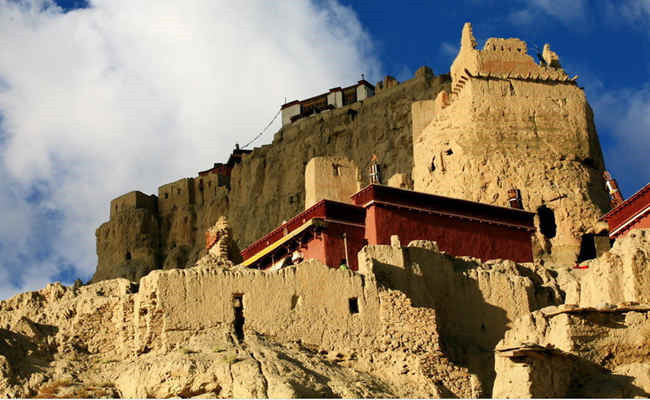
Surrounding the ruins is the city wall with the fort at four corners.After nearly 400 years of destruction, the surviving relics of Guge's history and art can be referred to as Mandala Hall, Gongkang, Red Monastery, White Monastery, Samsara Monastery, Zhoimalhakang or Stone Wall. sculptures, murals, ancient relics and mummies . (Photo: Tibetdiscoverytour).

Around the ruins, relics are found such as production tools, clothes, decorations, shields and arrows.They are very well preserved in the cold and dry air of the plateau.Inside many caves, the headless bodies were found to have become mummies.In addition, archaeologists also discovered the body of a girl buried in a wall, now located at the Tibetan Autonomous Region Museum.This is the first time Chinese archaeologists have encountered this form of burial.(Photo: Xinhua News Agency).

Stone carving is one of the precious treasures of the Kingdom of Guge.The wall consists of 4,502 Tibetan stone tablets carved with images and Tibetan characters.After centuries, most images and writing have been blurred or destroyed, but still retain their artistic and profound meaning.(Photo: Chinatourguide).

Hundreds of years old murals are masterpieces of Guge art.Their content is a description of Buddhist stories, myths as well as people's lives or the different cultures and customs of the kingdom.(Photo: China Daily).
- Discovering a thousand-year-old wall in China
- Explore the mysterious cave kingdom in the Himalayas
- Find the ruins of the mysterious ancient empire in Iraq
- Egypt discovered the ruins of the ancient city of Memphis
- Mysterious 14 ancient towers of Vietnam
- Excavating the forgotten kingdom in Scotland
- Mysterious terraced fields in Peru
- Mysterious land of giant tiger cubs
- The mystery of the Tuong Hung in Tibet
- The mystery of the disappearance of the Kingdom of Khazalle
- The climate heats up, threatening railways to Tibet
- Snake King - the 'puzzle piece' of the most mysterious of Maya: The archaeologists are crazy about decoding
 'Fine laughs' - Scary and painful torture in ancient times
'Fine laughs' - Scary and painful torture in ancient times The sequence of numbers 142857 of the Egyptian pyramids is known as the strangest number in the world - Why?
The sequence of numbers 142857 of the Egyptian pyramids is known as the strangest number in the world - Why? History of the iron
History of the iron What is alum?
What is alum? Theories about how to build pyramids in ancient Egypt
Theories about how to build pyramids in ancient Egypt  There is a cemetery hundreds of kilometers underground in Paris
There is a cemetery hundreds of kilometers underground in Paris  The truth about the banyan tree and Cuoi on the Moon that we often see
The truth about the banyan tree and Cuoi on the Moon that we often see  When you turn off the light in the room, where did the light go?
When you turn off the light in the room, where did the light go?  What happens if the wind stops blowing on Earth?
What happens if the wind stops blowing on Earth?  Why does the ball fly in the air?
Why does the ball fly in the air? 